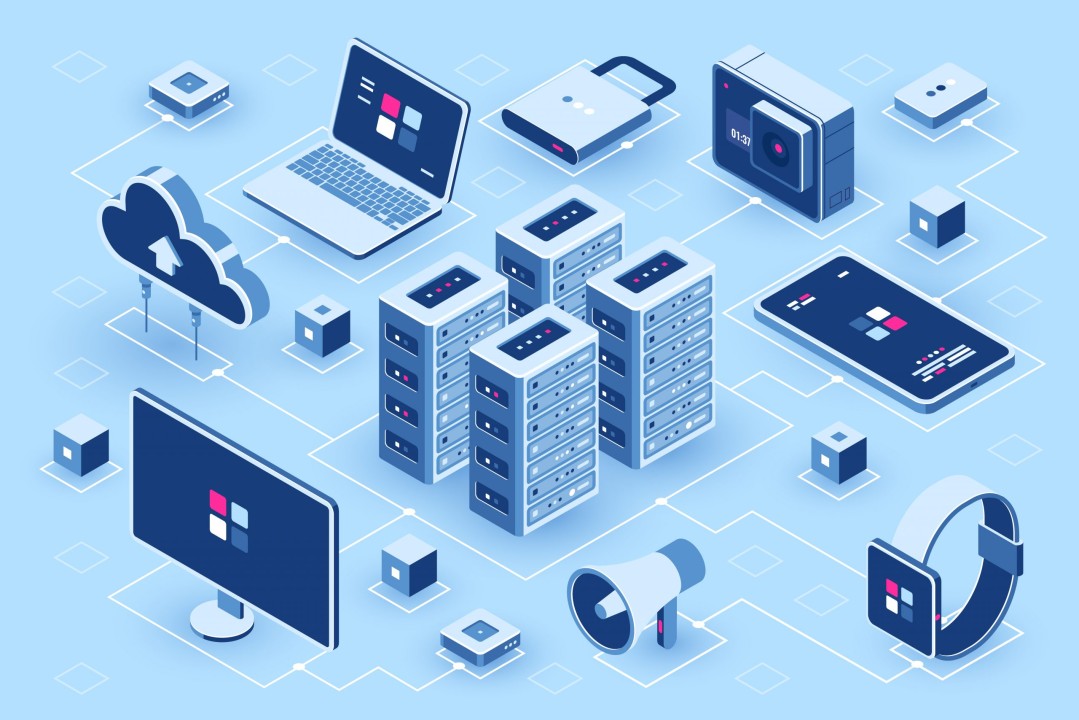
In today’s digital age, IT infrastructure forms the backbone of every business operation. IT infrastructure services encompass a wide range of solutions that support the functioning, management, and optimization of technology within an organization. These services ensure that businesses run smoothly, securely, and efficiently by maintaining critical hardware, software, networks, and storage systems.
Whether you’re a small business or a multinational corporation, leveraging IT infrastructure services can enhance operational efficiency, reduce downtime, and improve customer experiences. This blog explores the key components, benefits, and real-world examples of IT infrastructure services, illustrating how they drive business growth and innovation.
What Are IT Infrastructure Services?
IT infrastructure services refer to the comprehensive solutions that manage, maintain, and optimize an organization’s technology framework. This framework includes:
- Hardware: Servers, workstations, routers, and storage devices.
- Software: Operating systems, productivity tools, and business applications.
- Network: Connectivity components like switches, firewalls, and internet infrastructure.
- Data Storage and Management: Cloud-based and on-premise solutions to store and manage business-critical data.
These services can be categorized into:
- On-Premises Infrastructure Services: Managed within the company’s physical location.
- Cloud-Based Infrastructure Services: Delivered over the internet, offering scalability and flexibility.
- Hybrid Infrastructure Services: A combination of both on-premises and cloud solutions.
Key Components of IT Infrastructure Services

- Network Management
IT services monitor, manage, and secure a company’s network to ensure seamless communication. Example: Cisco’s network management solutions provide advanced monitoring and threat detection. - Data Storage and Backup Solutions
Businesses rely on IT services for secure data storage, backup, and recovery solutions. Example: Amazon Web Services (AWS) offers scalable cloud storage like Amazon S3. - Cloud Computing
Cloud infrastructure enables businesses to access computing resources on demand. Example: Microsoft Azure helps businesses migrate their operations to the cloud, reducing costs and improving efficiency. - Security Services
Protecting IT infrastructure from cyber threats is crucial. IT services include firewalls, antivirus software, and intrusion detection systems. Example: Palo Alto Networks provides enterprise-level cybersecurity solutions. - End-User Support
IT services also include technical support for employees, ensuring quick resolutions to hardware or software issues. Example: Managed IT support services from companies like IBM. - IT Monitoring and Maintenance
Continuous monitoring ensures systems remain operational and issues are detected early. Example: SolarWinds provides robust IT infrastructure monitoring tools. - Virtualization
Virtualization services allow businesses to run multiple operating systems on a single machine, optimizing resources. Example: VMware specializes in virtualization solutions for enterprises.
Significance of IT Infrastructure Services
IT infrastructure services are critical for modern businesses, as they form the foundation of daily operations and long-term growth. Here’s why they are significant:
- Operational Efficiency
IT infrastructure services streamline business processes, reduce downtime, and ensure seamless communication across departments, leading to increased productivity. - Scalability and Flexibility
With cloud-based solutions and scalable systems, businesses can adapt their infrastructure to meet growing demands without significant capital investment. - Enhanced Security
Robust IT infrastructure protects sensitive data and systems from cyber threats through advanced security protocols and monitoring tools. - Business Continuity
Disaster recovery and backup solutions ensure that businesses can quickly recover from disruptions, minimizing downtime and financial losses. - Cost Optimization
By outsourcing or adopting pay-as-you-go models like Infrastructure as a Service (IaaS), businesses can reduce the costs associated with maintaining on-premises hardware. - Support for Innovation
A well-maintained IT infrastructure enables businesses to adopt new technologies such as AI, IoT, and big data analytics, fostering innovation and competitive advantage.
Best Practices for Implementing IT Infrastructure Services
To maximize the benefits of IT infrastructure services, organizations should follow these best practices:
- Conduct a Comprehensive Assessment
Evaluate your current IT environment to identify gaps, inefficiencies, and future requirements. This includes hardware, software, networks, and security measures. - Develop a Clear Strategy
Create a roadmap that aligns IT infrastructure with your business goals. Prioritize scalability, security, and cost-efficiency while planning. - Embrace Cloud Solutions
Leverage cloud-based infrastructure for flexibility, scalability, and reduced costs. Hybrid solutions can be used to balance on-premises and cloud benefits. - Implement Robust Security Measures
Adopt firewalls, encryption, intrusion detection systems, and a zero-trust security model to protect critical systems and data. - Automate Processes
Use automation tools for routine tasks such as system monitoring, backups, and updates. This reduces manual errors and improves efficiency. - Invest in Monitoring and Analytics
Deploy monitoring tools to gain real-time insights into your IT systems. Predictive analytics can help detect and prevent potential issues before they escalate. - Regular Maintenance and Updates
Ensure all systems, software, and hardware are up to date. Regular maintenance prevents vulnerabilities and keeps the infrastructure running smoothly. - Train Your Team
Provide training for employees to ensure they understand the systems in place. This reduces reliance on external support and improves in-house expertise. - Establish a Disaster Recovery Plan
Prepare for potential disruptions by creating a comprehensive disaster recovery and business continuity plan. Test it regularly to ensure effectiveness. - Partner with Reliable Service Providers
Work with trusted IT service providers who offer scalable and tailored solutions to meet your business needs.
Real-World Examples of IT Infrastructure Services in Action
- Amazon
Amazon relies on a robust IT infrastructure to manage its eCommerce operations. Its cloud computing service, AWS, supports global businesses with scalable infrastructure solutions. - Tesla
Tesla uses IT infrastructure services to manage its production, vehicle software updates, and customer interfaces. Cloud computing and advanced data analytics enable seamless operations. - Bank of America
IT infrastructure services help Bank of America ensure secure transactions and protect customer data. Virtualization and hybrid cloud solutions provide flexibility and resilience. - Healthcare Organizations
Hospitals use IT infrastructure to store patient records securely and enable telemedicine services. Example: Mayo Clinic utilizes Epic Systems for electronic health records (EHR). - Educational Institutions
Universities leverage IT services for virtual classrooms, online exams, and resource sharing. Example: Zoom’s cloud infrastructure supports remote learning for millions of students worldwide.
Future Trends in IT Infrastructure Services
- Edge Computing
Bringing computation closer to data sources improves speed and reduces latency. IT services are increasingly incorporating edge computing for applications like IoT. - AI and Machine Learning
IT services are adopting AI-driven tools for predictive maintenance, monitoring, and analytics. Example: Splunk uses AI for IT operations (AIOps). - Zero Trust Security
A “never trust, always verify” approach to IT security is gaining traction. IT infrastructure services are adopting zero-trust models to mitigate risks. - 5G Integration
The rollout of 5G networks is revolutionizing IT infrastructure, enabling faster connectivity and new use cases. - Sustainability
Businesses are demanding eco-friendly IT solutions. Green data centre’s and energy-efficient technologies are key focus areas.
Conclusion
IT infrastructure services are integral to modern businesses, providing the foundation for seamless operations, enhanced security, and scalable growth. From small start-ups to global corporations, leveraging these services ensures businesses stay competitive in an ever-evolving digital landscape.
By adopting the latest technologies and trends, IT infrastructure services empower organizations to innovate, adapt, and thrive. Whether through cloud computing, advanced cybersecurity, or efficient network management, these services continue to play a pivotal role in driving business success.
The significance of IT infrastructure services lies in their ability to drive efficiency, innovation, and security for businesses. By implementing best practices such as embracing cloud solutions, automating processes, and ensuring robust security, organizations can optimize their IT infrastructure and prepare for future challenges.
A strategic approach to IT infrastructure services not only enhances day-to-day operations but also empowers businesses to innovate and scale in a competitive digital landscape.
For businesses looking to optimize their operations and future-proof their technology, investing in robust IT infrastructure services is no longer optional—it’s essential.


